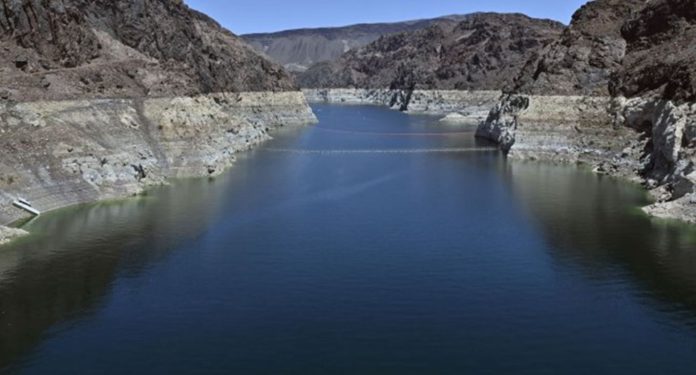Aug. 17 (UPI) — As the worst drought in centuries dries up the West, the Biden administration announced Tuesday it will cut water supplies from the Colorado River to six neighboring states and Mexico after talks failed on a new water conservation plan.
The Interior Department said Tuesday it will work to protect the long-term sustainability of the Colorado River basin, which has dropped to record levels, by forcing California, Arizona, Nevada, New Mexico, Utah and Wyoming to agree on a new water-sharing plan to replace a century-old agreement that was made when the river had more water.
“The worsening drought crisis impacting the Colorado River Basin is driven by the effects of climate change, including extreme heat and low precipitation,” Interior deputy secretary Tommy Beaudreau said in a statement. “In turn, severe drought condition exacerbate wildfire risk and ecosystems disruption, increasing the stress on communities and our landscapes.”
In June, the Interior Department gave the states 60 days to come up with a new and reduced water allocation plan before the government stepped in Tuesday.
“You had some parties bringing a good chunk of water to the table. Others didn’t even want to be bothered with coming to the table with anything meaningful,” Kyle Roerink, executive director at the Great Basin Water Network, told The Hill in an interview.
As of Tuesday, the states had not reached an agreement “as the nation’s largest reservoirs rapidly deplete themselves.”
While the Interior Department will give the states more time to negotiate a plan, it announced drastic cuts that will go into effect at the start of next year.
Arizona will lose the most with a 21% drop in water allocation from the Colorado River starting in January. Nevada will lose 8% of its supplies, while New Mexico will lose 7% of its allocation. California is not slated to lose any of its share at this time.
“It is unacceptable for Arizona to continue to carry a disproportionate burden of reductions for the benefit of others who have not contributed,” Tom Buschatzke, director of Arizona’s Department of Water Resources, said in a statement.
Besides conservation, the department is working to maintain water levels on the Colorado River to protect two major dams that generate electric power.
Water levels on Lake Mead near Las Vegas dropped to 1,050 feet below sea level for the first time ever, according to federal officials.
Low water levels Arizona’s Lake Powell are also threatening hydro power production and electricity supplies in southern California and across the Southwest.
Farmers in California are also worried water restrictions could impact food consumers around the country.
“Hundreds of thousands of acres of farmland have been fallowed across California,” Fresno County Farm Bureau CEO Ryan Jacobsen said. “Some farmers say even more fields could go dry and out of production by next year.”
On Tuesday, President Joe Biden signed the Inflation Reduction Act, which means billions of dollars for drought preparedness could start flowing soon. The tax and climate package includes $4 billion to buy or save water for the Colorado River basin.
“As dire as this situation is, there are reasons for encouragement,” Beaudreau said. “We’re bringing resources to the table in the form of infrastructure investments to help with water delivery, improvement so the system to support efficiency, and support for users, including irrigators, as everyone has to tighten their belts in this situation.”






